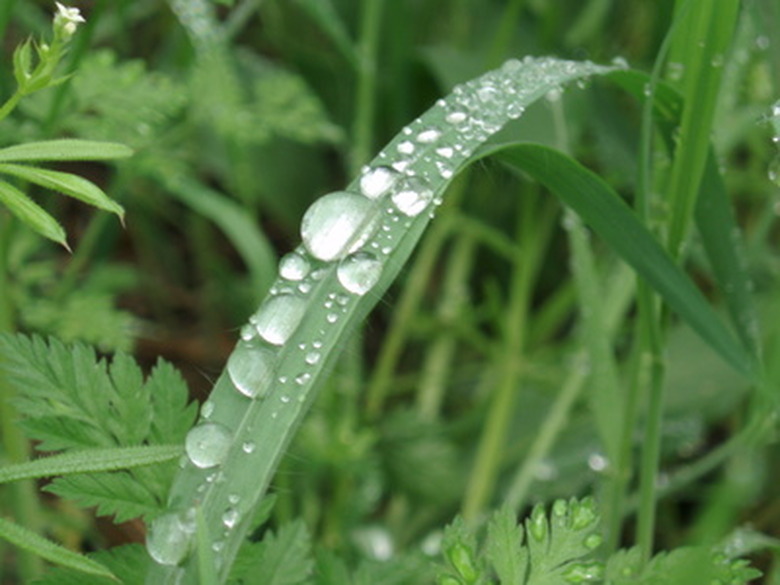What Are The Starting & Ending Materials Of Photosynthesis?
Using a two-stage process called photosynthesis, plant life converts energy from sunlight into carbohydrates, or chemical energy. The first stage, called the light reaction, captures energy from light. The second stage, called the dark reaction, converts captured energy into glucose (sugar) and stores it in the plant.
Raw Materials
Sunlight (energy), carbon dioxide from the air and water are the raw materials plants gather from their environment to conduct photosynthesis. Sunlight and carbon dioxide enter through the surface of leaves. Water enters through the plant's root system.
During the light reaction, a tiny particle of oxygen–called an atom–is stripped from each water molecule and released into the air. The remaining molecule's electrons are charged with energy from the light. Carbon dioxide is used by the plant to produce glucose during the dark reaction.
- Using a two-stage process called photosynthesis, plant life converts energy from sunlight into carbohydrates, or chemical energy.
- The second stage, called the dark reaction, converts captured energy into glucose (sugar) and stores it in the plant.
Plant Compounds
Plants contain a pigment called chlorophyll. It gives leaves, where photosynthesis takes place, a green appearance. Plants use chlorophyll to capture light energy. It absorbs red and blue light during the light reaction.
Adenosine triphosphate (ATP) and nicotine adenine dinucleotide phosphate (NADP) are plant compounds produced during the light reaction to store captured energy. The energy is used during the dark reaction to convert carbon dioxide into glucose.
Resulting Materials
Materials resulting from the photosynthesis process are oxygen and glucose. A plant needs to take in six molecules of water and six molecules of carbon dioxide to produce six molecules of oxygen and one molecule of glucose.
- Plants contain a pigment called chlorophyll.
- The energy is used during the dark reaction to convert carbon dioxide into glucose.
Oxygen is released into the air through the leaf surface. Glucose is stored in the plant, which is part of the food chain for animal life. By providing oxygen and food, the photosynthesis process provides environmental balance to the respiration process of animals.
